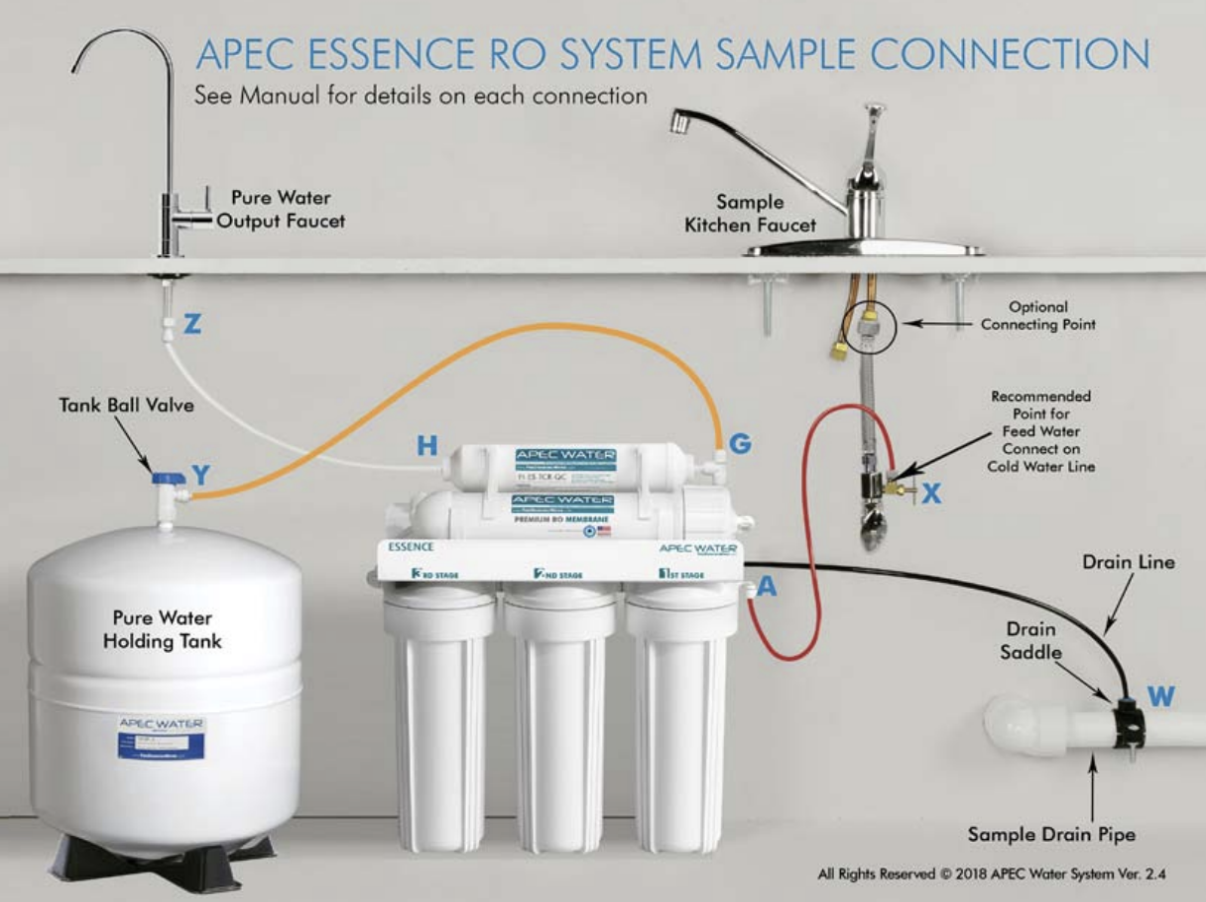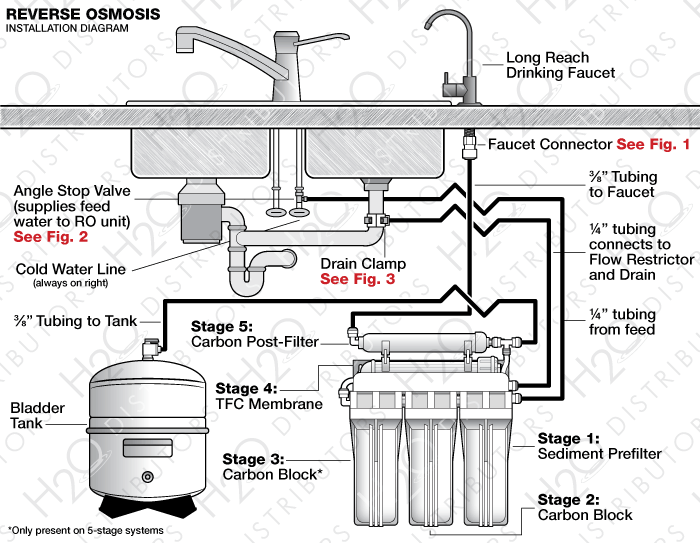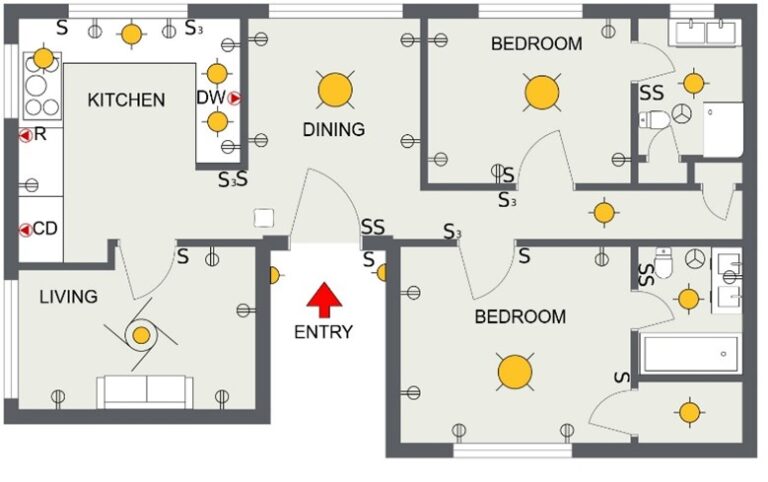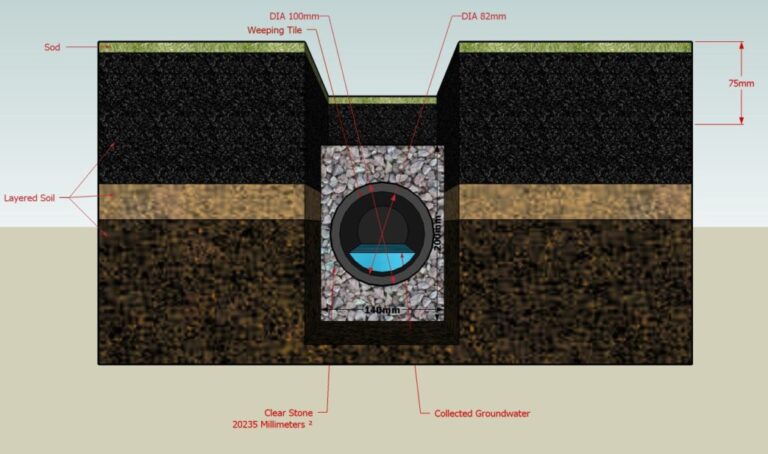Where Is The Best Place To Install A Reverse Osmosis System?
A reverse osmosis (RO) system is an effective way to purify water for drinking, cooking, and other uses. When installing an RO system, it is important to consider the location carefully. The best place to install an RO system is close to the water source, such as the kitchen sink, so that the purified water can be used right away. The location should also be accessible for maintenance and repairs. Additionally, the system should be installed in an area that is well-ventilated and away from direct sunlight. Taking these factors into consideration will ensure that the RO system is installed correctly and will provide clean and safe water for years to come.
Exploring the Benefits of Installing a Reverse Osmosis System
Reverse osmosis systems are an effective way to purify water for drinking, and many people are now installing them in their homes. But where is the best place to install them? To help answer this question, it’s important to understand the benefits of installing a reverse osmosis system.
Reverse osmosis systems are effective at removing a wide range of contaminants from water, including bacteria, pesticides, and heavy metals. This can help improve the taste of your drinking water, as well as its clarity. Moreover, it can even help prevent certain illnesses caused by contaminated water.
When considering where to install a reverse osmosis system, it’s important to consider the location of your home’s water supply. Depending on the age and condition of your plumbing, a reverse osmosis system can be installed either at the point-of-entry (POE) or point-of-use (POU). POE systems are installed at the main water supply, while POU systems are installed at individual fixtures, such as a kitchen sink.
Understanding the Different Types of Reverse Osmosis Systems
Reverse osmosis systems are used to treat contaminated water, removing contaminants from the water supply. When considering which reverse osmosis system is right for you, it’s important to understand the different types available and where each type should be installed.
The most common type of reverse osmosis system is a point-of-use system, which is installed at the point where water is used for drinking and cooking. This type of system is designed to provide clean water for a single appliance or tap. Point-of-use systems are often installed under kitchen sinks, but they can also be installed at other points in the home, such as near garden hoses or in bathrooms.
Another type of reverse osmosis system is a whole-house system, which is installed at the point where water enters the home. This type of system is designed to provide clean water throughout the entire home, removing contaminants from all water sources. Whole-house systems are typically installed in the basement or garage, but they can also be installed outside the home if desired.
Finally, some reverse osmosis systems are portable and can be moved from place to place. These systems are ideal for people who are renting or who are living in temporary housing. Portable systems are also useful for those who travel frequently and want to have access to clean drinking water no matter where they are.
Calculating the Cost of Installing a Reverse Osmosis System
For those looking to install a reverse osmosis system in their home, it’s important to consider the associated costs. Installing a reverse osmosis system can be an expensive endeavor, depending on the size of your home and the complexity of the installation process. To calculate the cost of installing a reverse osmosis system, you need to take into account the cost of the equipment, any additional plumbing or electrical work that may be needed, and the cost of any necessary permits or inspections.
The cost of the equipment is the most obvious factor when considering the cost of installing a reverse osmosis system. Depending on the type and size of system you’re installing, the cost of the equipment can range from a few hundred dollars to several thousand dollars. When choosing a system, it’s important to research the features, warranties, and energy efficiency of the system to ensure you’re getting the best value for your money.
In addition to the cost of the equipment, you may need to hire a plumber or electrician to install the system. In some cases, you may need to obtain a permit or inspection from your local government before you can begin the installation. Depending on the complexity of the installation, the cost of the labor and permits can add significantly to the overall cost of the installation.

Comparing Installation Procedures for Different Types of Reverse Osmosis Systems
Reverse osmosis (RO) systems are the most efficient way to purify water, removing up to 99% of contaminants from tap water. But if you’re looking to install one in your home, you must consider the type of system you need and the best place to install it. The installation process for different types of RO systems varies, so it’s important to be aware of the various installation procedures and factors to consider.
For starters, the type of RO system you choose will determine the installation process. The most common types of RO systems include under-sink, whole-house, and countertop RO systems. Each type of system requires a different installation process. Under-sink systems are the most popular and require a plumber to install, while countertop systems are the easiest to install and require no professional help.
The location of the best place to install an RO system depends on the type of system you choose. For under-sink systems, the best location is near the sink, as this is where the water is used most often. Whole-house systems require more complex installation and must be placed near the main water line. Countertop systems can be installed anywhere and require minimal effort.
No matter the type of RO system you choose, it’s important to be aware of the installation process and the best place to install it. By understanding the different requirements, you can ensure that your RO system is installed correctly and that your water is purified efficiently.
Factors to Consider When Choosing the Best Location for Installation
When it comes to installing a reverse osmosis system, the location of the installation is of utmost importance. It can be difficult to determine the ideal spot for installation, as there are many factors to consider. The first thing to consider is the accessibility of the area. Is it easy to reach the spot? Will the system be easy to maintain and service? Additionally, the system should be placed in an area that is free of contaminants, so the water produced will be pure.
The amount of space available is also important. The system needs enough room to be installed, as well as for maintenance and repairs. Additionally, the system should be placed near a power source, such as an electrical outlet, for easy access.
The reverse osmosis system should also be placed in an area where it is not subject to freezing temperatures, as this can damage the system. It should also be placed away from direct sunlight, as this can cause the water to heat up. Finally, the system should be installed in an area that is well-ventilated and away from other sources of heat, such as a water heater.
Tips for Ensuring a Smooth Installation Process
Installing a reverse osmosis system in your home can be a daunting task, but following a few simple tips can help make the process much smoother. First and foremost, it is important to identify the best place to install the system. Generally, the best place is near the main water line, as this will allow the system to be connected to the existing water supply. It is also important to ensure that the space has adequate room to fit the system and its components. Additionally, make sure to measure the area to ensure that the system will fit before beginning the installation process.
Once you have chosen the ideal location for the reverse osmosis system, it is essential to consider the type of installation that is best suited for your home. If you have existing water lines, you may be able to simply connect the system with existing plumbing fixtures. For those who do not have existing water lines, it may be necessary to hire a professional plumber to install the system. Additionally, you may need to purchase additional parts such as valves, clamps, and hoses to ensure a successful installation.
When it comes to installing a reverse osmosis system, it is important to take the time to identify the best place and the best installation method. By following these tips, you can ensure a successful installation process and enjoy the benefits of having clean, pure water in your home.
FAQs About the Where Is The Best Place To Install A Reverse Osmosis System?
1. What is the difference between a reverse osmosis system and other water filtration systems?
A reverse osmosis system is a type of water filtration system that uses a semi-permeable membrane to remove contaminants, such as lead, nitrates, chlorine, and other hazardous chemicals, from drinking water. This type of system is more effective than other types of filtration systems at removing these contaminants.
2. What is the best place to install a reverse osmosis system?
The best place to install a reverse osmosis system is near the main water supply line, where it can filter the water before it enters the home. This will ensure that all of the water in your home is filtered.
3. Is a reverse osmosis system difficult to install?
No, a reverse osmosis system is fairly easy to install. Most systems come with all the necessary parts and instructions for installation. However, you may need a plumber to install the system if it is not in an accessible area.
Conclusion
The best place to install a reverse osmosis system is at the point of entry into the home, usually near the water line. This is the best location because it allows the water to be filtered before it enters the home, ensuring that all of the water in the home is filtered. Installing a reverse osmosis system at the point of entry also helps to reduce maintenance costs since it can be serviced from one location.





